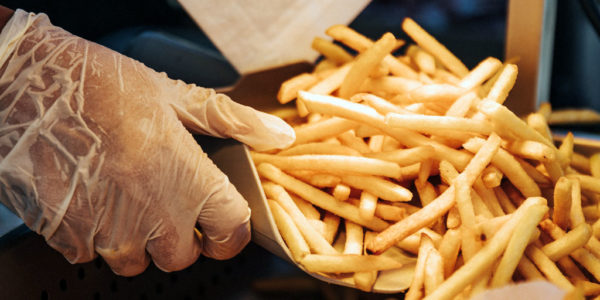People who received free school meals whilst at school have lower average earnings at age thirty than their peers who have similar qualifications.
A new article by the Office for National Statistics uses an analysis of long-term administrative data to highlight the earnings gap of people who grew up in income-deprived backgrounds in England. The article compares the earnings of those who were in receipt of free school meals at KS4 with people who attended state-funded secondary schools and were not eligible for free school meals and people who attended independent schools. Free school meals (FSM) are available for students who attend state-funded schools and live in a household with an income of £7,500 a year or less.
You can read the full article here.
Earnings at 30
The analysis found a significant earnings gap at the age of thirty across the three groups. The average earnings at the age of thirty for those in receipt of FSM whilst at school was £17,000 compared to £22,700 for those who did not receive FSM and £33,000 for those who attended an independent school.
This earnings gap grew considerably when looking at the highest earners in each group. The top 10% of earners who had been in receipt of FSM had an average salary of £35,000 by the age of 30, just above the average earnings for those who had an independent school education at the same age. In comparison, the top 10% of earners not in receipt of FSM from state-funded schools earned an average of £44,500 whilst the same group from independent schools averaged £71,000. The difference is just as stark when looking at the top 1% of earners: FSM £62,000, Non-FSM £85,000, privately educated £180,000.
Qualification gap
Some of the earnings gap reported here may be attributed to differences in education level. People from income-deprived backgrounds and in receipt of FSM whilst in KS4 were much less likely to go on to further education than their peers. Only 48% of those in receipt of FSM had gone on to complete a qualification higher than a GCSE, compared to 71% of non-FSM students and 96% of students from independent schools.
The qualification gap between these three groups can also be seen by the most common highest level of qualification gained by age thirty. The most common highest qualification for those in receipt of FSM was GCSEs, at 35.8%, for non-FSM it was A-Levels, at 29.1%, and for those with an independent education, it was a Bachelor’s degree, at 57.3%.
Just 23.3% of people from income-deprived backgrounds went on to complete a qualification higher than Level 3 (A-Level), compared to 41.4% of non-FSM recipients and 82.7% of those with an independent education.
Earnings gap with similar qualifications
The analysis also found that at all levels of qualification, those eligible for free school meals were earning less at the age of 30 years than their peers who had the same highest level of qualification. Those who went to an independent school have the highest earnings in almost every group of people with the same highest level of qualification.
Those with higher KS4 attainment (GCSEs) had higher earnings in all groups. However, the earnings gap remains even for those with similar levels of GCSE attainment. Pupils who received FSM and were in the highest quintile of GCSE attainment had average annual earnings of £28,400 compared to £33,800 for non-FSM pupils and £46,800 for independent school pupils in the same quintile. The disparity continues across each quintile of KS4 attainment; a pupil who attended an independent school and was in the bottom 20% nationally for GCSE attainment earned an average of £22,000 a year at 30 years of age, whilst a pupil in receipt of FSM would have to be in the top 40% nationally for KS4 attainment to have similar earnings at the same age.
Earnings gap when all things are equal
As part of their analysis, the ONS has created a model to identify any earnings gap between pupils from income-deprived backgrounds and their peers which takes into account other factors that may result in earnings differences. The model takes into consideration gender, region, ethnicity, work experience and KS4 attainment. The analysis found that even when all other factors were equal the earnings gap between pupils who attended an independent school and those eligible for free school meals was around 20%.
As the article states: “This means that, if a person who was eligible for free school meals as a child had had the same level of education, KS4 attainment, years of labour market experience, ethnicity, and went to secondary school in the same region as a person who attended an independent school, the model predicts that on average they would still earn around 20% less than that of an independent school student. That result was true for men and women.”





